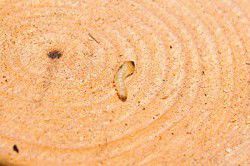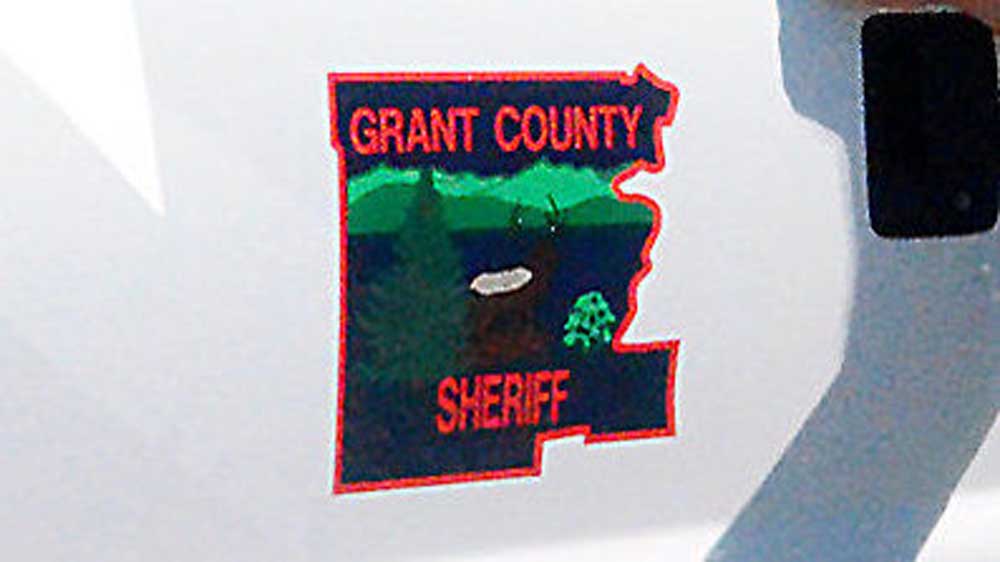Bug’s-Eye View
Published 5:00 pm Tuesday, June 17, 2008

- <I>The Eagle/Scotta Callister</I><BR>This wood borer was found tunneling into a charred tree in the Thorn project area. It was put on a slice of wood to provide a better view.
DAYVILLE – Some local sawmill and Forest Service officials last week got a bug’s-eye view of some of the timber that could be up for sale in the Thorn Fire Recovery Project.
Trending
The sale is expected to be advertised for bid sometime next month.
Representatives of Prairie Wood Products and the Malheur National Forest (MNF) went on the June 12 pre-sale tour – the agency contingent to reassess the value of the sale and the industry reps to size up a possible bid.
They checked out several units of the sale area, which was burned in the Shake Table Complex Fire in 2006.
Trending
The first stop was to check out hazard trees along the 2150 Road into the project area. Later stops included a blackened stand that would require some helicopter work, and a mixed-burn area that would be tractor-logged.
Checking a few sample trees, the foresters looked for “bugs” – wood borers that, in the larval stage, chew tunnels into the trees; “checking” or cracking down the bole; and blueing or staining of the wood as the scorched trees age and decay.
Dan Bishop of Prairie Wood Products said all of those problems affect the value of the wood harvested in the sale, and they worsen the longer it takes to get to market after a fire.
“If they had sold this last fall, they would have gotten a lot more money for it,” Bishop said. “That’s the sad part.”
The sale is on the table now only because of a precedent-setting agreement reached last month by industry and environmental groups who had appealed the fire salvage plan. The pact called for protecting certain unroaded areas and wildlife habitat while allowing the Thorn sale and a separate project in the 2007 Egley Complex fire area to proceed without further appeal or litigation.
Industry officials have said that further delay on Thorn and Egley could leave little worth salvaging.
In one area of the Thorn sale last week, the group found trees that were “pretty well nuked” – the assessment of Larry Baughman, forest measurement specialist for the MNF. They checked another tree that was “blue to the heart.”
Another area offered more promise, however.
A Forest Service marking crew last began working the area last fall, leaving orange paint to designate the snags and reserve trees that can’t be touched. Blue paint marks the trees that are all right to cut.
However, Baughman said crews will return to the are in the next week or so to check the actual conditions.
“It was pretty dark and there was a lot of cloud cover before, so I want them to go back in there and look at it again,” he said.
Some parts of the sale are marked under what is known as the Scott Guildelines, which use several factors to predict mortality of trees that show damage but still have some green in the wake of the fire.
Baughman expects some adjustments in the next couple of weeks.
For examples, officials already see problems with the areas proposed for helicopter work. They said this week that the deterioration of the timber combined with poor market conditions and skyrocketing fuel costs make it unlikely that the chopper work will pencil out. Tractor and skyline logging remain viable in other parts of the sale, however.
The sale will consist largely of white fir and Douglas fir, with some Western larch and “an occasional lodgepole,” Baughman said. No ponderosa pine will be cut unless such trees are found to be danger trees adjacent to the haul roads.
The sale comes as sawmills in the local area have been hampered by poor supply and market conditions.
Officials are still determining the estimated volume that will come from the sale, however.
When the marking is complete, the sale will be appraised advertise. A bid award could be made toward the end of July.








